How To Disconnect a Dishwasher

Wondering how to disconnect a dishwasher, whether it’s an integrated dishwasher or a freestanding one? It’s a question many of us will google at some point unless you’re a plumber!
Dishwashers are more complex to remove than other plug-in devices like microwaves and ovens. Think of them as similar to gas ovens or radiators when it comes to disconnection. For the sake of your safety and your home, make sure you disconnect and remove your old dishwasher correctly!
Removing a Dishwasher: A 7 Step Guide

Removing a dishwasher can be a complicated business, so here’s our step-by-step guide to help you get it out without causing any damage.
1. Empty Your Dishwasher Before Disconnecting
Before you begin the process to disconnect your dishwasher, especially if you’re figuring out how to remove an old dishwasher or learning to unplumb a dishwasher, make sure it’s completely empty. Removing all dishes and utensils will prevent any damage or mess during the process. The last thing you want is broken pottery scattered around while you’re working on disconnecting the water and power lines.
2. Read the Dishwasher Manual
Every dishwasher model is unique, so before you disconnect your dishwasher, take a moment to read the manual. Understanding your specific dishwasher’s layout and connection points will make the process of disconnecting water lines and power much smoother.
If you’ve misplaced the manual, look for the model number on the machine and search for it online.
3. Cut the Power
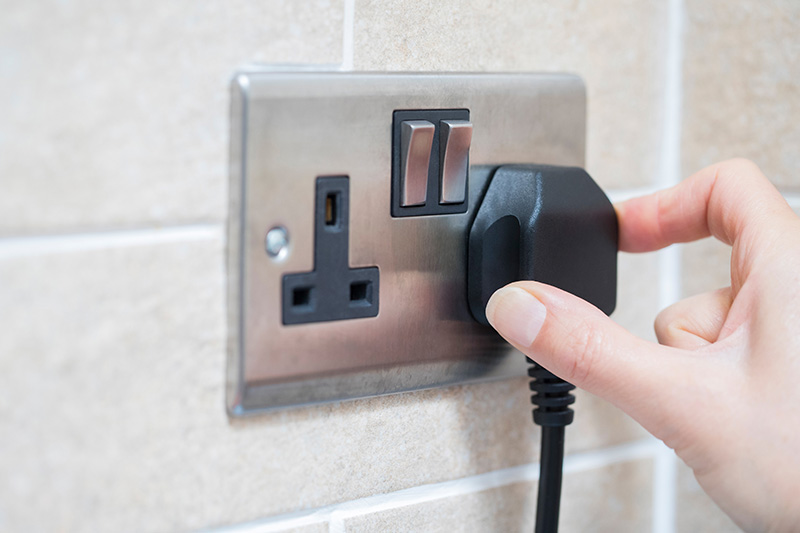
Safety first! Before you try to disconnect your dishwasher, make sure to unplug the dishwasher completely. Disconnecting dishwasher power is crucial because dishwashers involve both water and electricity, making it essential to ensure everything is turned off safely.
If you’re disposing of the dishwasher for safety reasons, cutting off the power plug after unplugging it ensures the machine won’t be reused.
You can go one step further by using a permanent marker and write the reason why you are disposing of the dishwasher on it so other people don’t inadvertently try using it.
4. Turn Off the Water Supply Before Disconnecting

To disconnect a dishwasher, you’ll need to turn off the water supply.
First prepare yourself so you can safely and efficiently disconnect the water supply:
- Locate the water supply by following the water line to its connection point - usually located near your kitchen sink or laundry room.
- Get a bucket and an old towel ready so you can dispose of excess water left in the water line.
The valve may have an easy turn valve you can turn by hand (as pictured), or you may need a screwdriver to turn the valve that looks flush with the pipe. Once you’ve found the valve and turned it off, normally by turning it 90 degrees, you can unscrew the water pipe near the valve connection end - and be ready with bucket and towel you fetched beforehand.
If water starts leaking, quickly check the valve or reconnect the water pipe and then recheck the valve.
5. Disconnect the Dishwasher Drain Hose
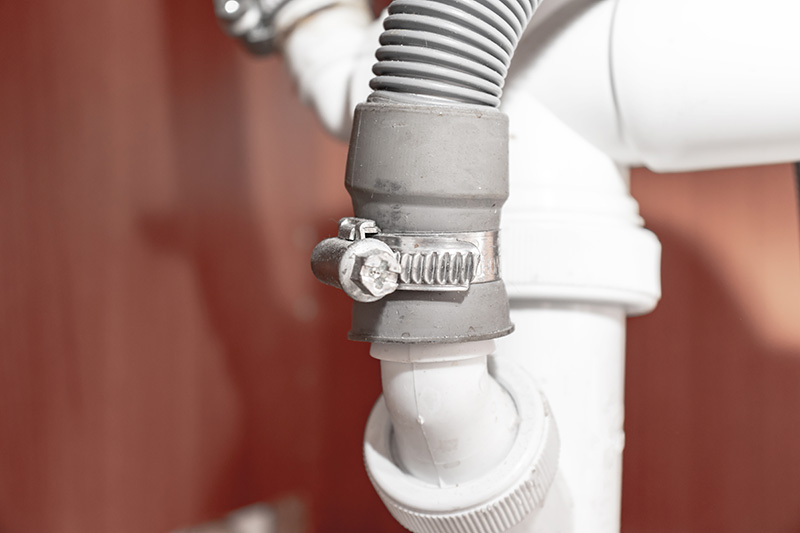
After cutting the power and turning off the water supply, the next step to remove your dishwasher is to disconnect the dishwasher drain hose.
Typically, the hose is secured with a metal clamp to the wastewater pipe. Loosen the metal clamp holding the hose with a screwdriver, then gently pull the hose free.
Again, be prepared for some residual water with your bucket and towel. Remember, this water can be dirty, so handle the drain hose with care and keep the old towel handy to ensure you don’t end up having to clean your floor of dirty water.
6. Tips on How to Remove an Integrated Dishwasher

If you do not have an integrated dishwasher, the good news is you can skip these steps and scroll down to Step 7! Otherwise, stick around for advice on how to remove an integrated dishwasher.
Integrated dishwashers built into your kitchen cabinetry often have a door panel that matches the rest of your kitchen design, making them blend seamlessly with your cabinets. These built-in dishwasher units are usually more challenging to remove because they are fixed into place and the door panel needs removing to be used with your new integrated dishwasher if replacing like-for-like.
Unfortunately, you typically can’t simply pull out an integrated dishwasher. Here are the steps you will need to follow when removing an integrated dishwasher:
Remove the Kick Plate to Access Connections
Depending on the model, to fully disconnect your dishwasher, you’ll need to remove the kick plate. Located at the bottom of your dishwasher, this plate covers the area where the water and possibly the electric power connections are found.
You may need to access screws under the door or at the front of the machine. Carefully remove these screws to expose the connections, making it easier to safely disconnect the dishwasher from your kitchen’s plumbing and electrical systems.
Unscrew the Dishwasher Frame
Once the kick plate is removed, it’s time to unscrew the frame to disconnect your dishwasher from its built-in position. Open the dishwasher door and locate the screws that secure the machine to the countertop or cabinet.
Use a screwdriver to loosen these screws, making sure the frame is completely detached. This step is crucial to ensure the dishwasher can be safely pulled out without damaging your kitchen setup.
How to Remove an Integrated Dishwasher Door
When removing an integrated dishwasher, one of the additional steps you may need to take is removing the door panel before you can fully disconnect the appliance.
The door on an integrated dishwasher is often custom fitted to match the rest of your kitchen cabinetry, so it’s important to handle it carefully to avoid damaging both the door and the surrounding cabinets.
Steps to Remove an Integrated Dishwasher Door
1. Open the Dishwasher Door:
Start by opening the dishwasher door fully to access the screws that secure the door panel to the appliance. These screws are typically located along the top edge of the door and may be hidden under a rubber seal or trim.
2. Locate and Remove the Screws:
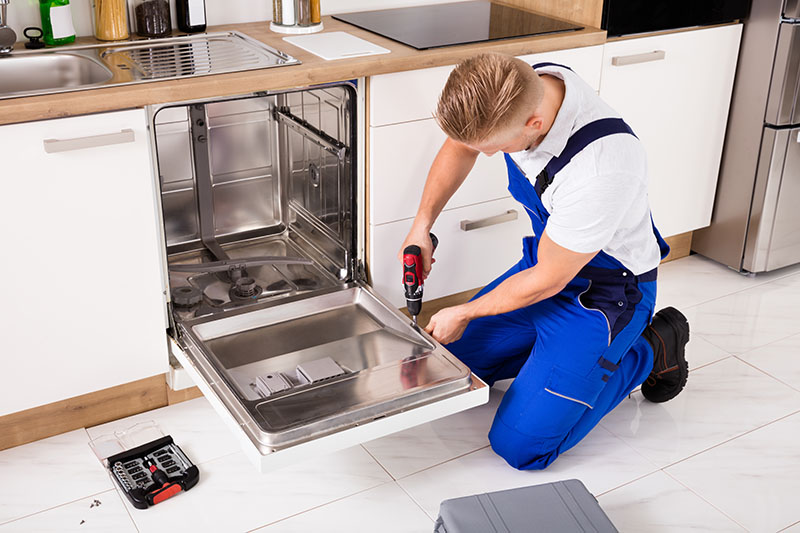
Use a screwdriver to carefully remove the screws that hold the door panel in place. Be sure to keep the screws in a safe place, as you may need them when reattaching the panel later.
3. Gently Detach the Door Panel:
Once the screws are removed, gently pull the door panel away from the dishwasher. Depending on the model, the panel may slide off easily, or you might need to lift it slightly to release it from its clips.
4. Disconnect Any Wiring:
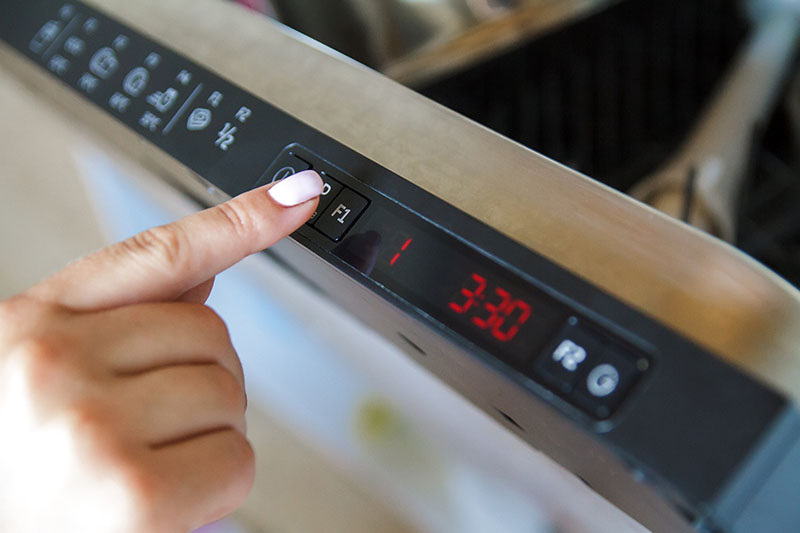
Some integrated dishwasher doors may have wiring connected to the control panel or display. If so, carefully disconnect these wires before fully removing the door. Make sure to note where each connection goes for easier reassembly.
5. Store the Door Panel Safely:
Once the door is detached, place it in a safe location where it won’t be damaged during the rest of the removal process.
Removing the door of an integrated dishwasher is a crucial step, especially if you’re planning to replace or upgrade your appliance. By following these steps, you can ensure that the door is removed safely, allowing you to proceed with the rest of the disconnection process.
7. Carefully Pull the Dishwasher Out
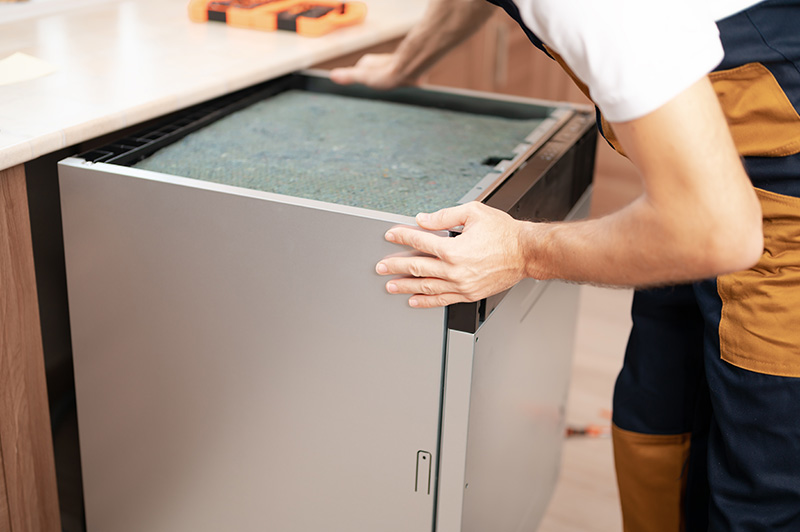
With all the connections safely disconnected from your integrated or freestanding dishwasher, the final step is to pull out the dishwasher safely from its space.
Removing a dishwasher requires caution to avoid any damage or injury. Hold the dishwasher by its sides, not the door, to avoid tipping or injury – especially to your fingers or feet!
It’s a good idea to place a towel underneath the machine to protect your floor and make sliding it out easier. Take your time and avoid straining your back as dishwashers can be heavy. If you are looking to resell a dishwasher in good working order it’s important to handle them with care.
What Kind of Waste is a Dishwasher?
After you disconnect and remove your dishwasher, you may wonder about dishwasher disposal and how to do it properly. Disposing of a dishwasher responsibly is important to avoid harm to the environment and comply with regulations.
Dishwashers are considered electrical waste due to their power components, which can be hazardous if not handled correctly. This type of waste also contains valuable materials like rare earth metals that can be recycled. Ensure your old dishwasher is disposed of responsibly to protect both your health and the environment.
Can a Dishwasher Be Recycled?
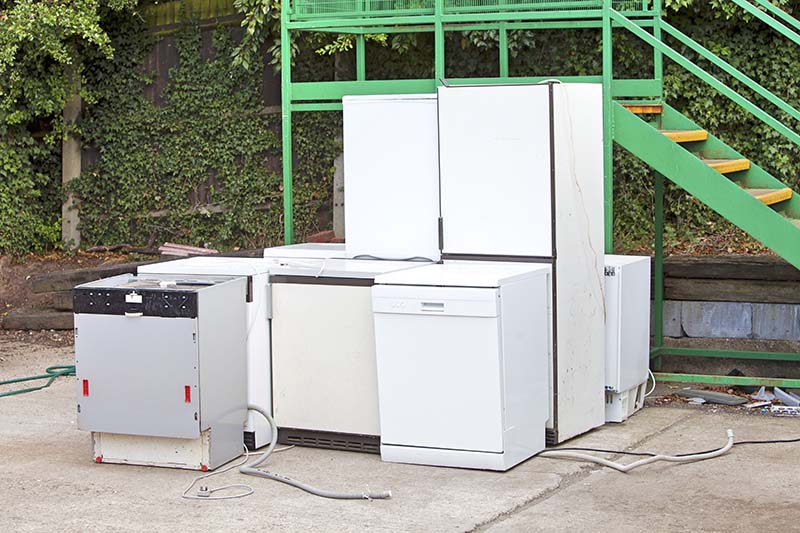
Once you’ve disconnected and removed your dishwasher, you can consider it going to a new home if it’s in good working order. Alternatively, if you are disposing because of the cost of repair, local second-hand repair stores may still take it off your hands to be resold after repairing.
If the dishwasher is not suitable for resale, then you should look at recycling it. Most dishwasher components, including stainless steel and electrical parts, can be recycled. This not only helps reduce waste but also allows valuable materials to be reused in new electronics.
Reuse by giving a dishwasher a second life is always more environmentally friendly than the energy that goes into recycling them and avoids any waste going to landfill that can’t be recycled.
How to Dispose of a Dishwasher
If it can’t be reused, there are a number of ways to dispose of a dishwasher. You can take it to the tip yourself or using the services of a man with a van to remove a dishwasher.
To avoid being fined, ensure you a reputable waste disposal company such as HIPPO, happy in the thought that more than 95% of our waste is diverted from landfill.

